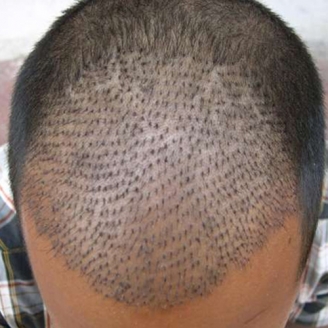FUE hair transplant is a slightly invasive hair restoration that most people now embrace after other failed procedures. So, this process replaces the
FUE hair transplant is a slightly invasive hair restoration that most people now embrace after other failed procedures. So, this process replaces the thin hair or bald head with healthy follicles plucked from (back of the head) donor site, enhancing self-esteem or lost confidence.
While FUE treatment is one of the best hair transplant techniques, it can be a remarkable outcome if you follow your doctor’s pre and post precautions.
Before we get to that, let’s explain how this process works.
So, the FUE hair transplant involves extracting some hair from the back of the head and transplanting it to the scalp or intended region. This process helps replace old follicles with fresh ones that help grow the new hair. But how does this happen?
A certified surgeon would use a unique device less than 1mm diameter to extract grafts in groups of one to four hairs. These may come from the sides or back of your head.
He carefully implants the follicles at a good angle and transfers them to the recipient target region. He does this using a powerful stereo microscope.
So, after this procedure, the follicles get nourished by blood vessels. That’s how the hair starts to grow again.
As you now understand what to expect, below are crucial things to note if you plan to have an FUE hair transplant.
Pre-Precaution To Follow Before Getting FUE Hair Transplant
- Avoid smoking a day before you start your surgery.
- Skip the alcohol for at least three days before your surgery.
- Don’t take any blood thinners or aspirin two weeks before your surgery. That includes antidepressants.
- Vitamins or dietary supplements are a big no for two weeks before your surgery.
- Don’t get your haircut before the surgery.
- A head massage after every 10 to 30 minutes for a few weeks before your procedure would help to increase the blood flow to your scalp.
- Your doctor may ask you to take minoxidil (Rogaine) medications. Ensure to do that before your treatment or as instructed.
- A surgeon may suggest getting an electrocardiogram (ECG) or having a blood test before your FUE hair transplant. Ensure to do that.
These are some of the precautions to follow before starting your treatment. However, your doctor may provide you with more than mentioned during your consultation.
Post Precaution To Follow After FUE Hair Transplant
Although you may experience swelling from the treated region and a little discomfort for three days. But FUE recovery is quicker. Below are some aftercare instructions you should follow:
- Wait for at least three days after your procedure before washing your hair.
- When you start washing your hair after three days elapses, use mild and unscented shampoos.
- Avoid strenuous activities and take it slow after an FUE hair transplant to help speed up your healing.
- Avoid combing or brushing your new hair as the treatment region is still sensitive. But you can do this after three weeks or more.
- Avoid putting on beanies or hats until your doctor gives you the go-ahead.
What to Expect After your Procedure?
A patient will go for examination and bandaging the following. And this might continue for the first week, depending on the healing.
You may start to see hairs fall during the healing process. That shouldn’t worry you because it’s normal. But after 3-4 months, you will start noticing a difference.
Some patients may have similar hair that grows after an FUE hair transplant. But others may not get as thick as the usual texture. That also depends on the health of the hair transplant.
The treatment process will vary. However, from 6-18 months, you start getting the natural look of your hair.
Who is Fit for FUE?
Generally, people with baldness or thin hair at the top or front of their heads are ideal candidates for this procedure. They may have tried other options like minoxidil but are looking for a more permanent solution.
And since the hair graft will mainly come from the back of the head, it should have good density and stability.
Benefits of FUE Hair Transplant
High Graft Quality
Using a computerized FUE system provides real-time 3D analysis. It calculates each hair follicle and only selects the healthiest and strongest strands for harvesting and transplants.
Minimal Scarring
You can hardly notice anything happening in the donor area, even if you wear your hair short. Why? Because the surgeon randomly harvests the follicles. And as a result, the appearance and the donor area hair density are not affected much.
Natural-Looking Results
As this procedure involves harvesting and transplanting hairs in their natural groupings, the process doesn’t leave any linear scar. But, on the other hand, the patient gets a natural appearance which allows you to style your hair anyhow you like. Therefore, you don’t have to worry about a visible scar even as you keep it short.
No Pain During Or After Treatment
Since FUE hair transplant is minimally invasive, you can only experience minimal pain or discomfort during and after the procedure. But your surgeon administers local anesthesia, so it doesn’t hurt.
Short Recovery Time
Patients recover fast because there is no scalpel or stitching involved in the treatment. They can quickly bounce back to their activities after a few days of rest.
In Conclusion
Adhering to the above precautions of FUE hair transplant will help your hair grow to look as natural as ever. The results of this procedure are totally worth it and one of the highest-quality hair transplants out there. If you have any queries about hair loss, patches, or baldness, visit us to consult a hair transplant specialist to get better recommendations.

